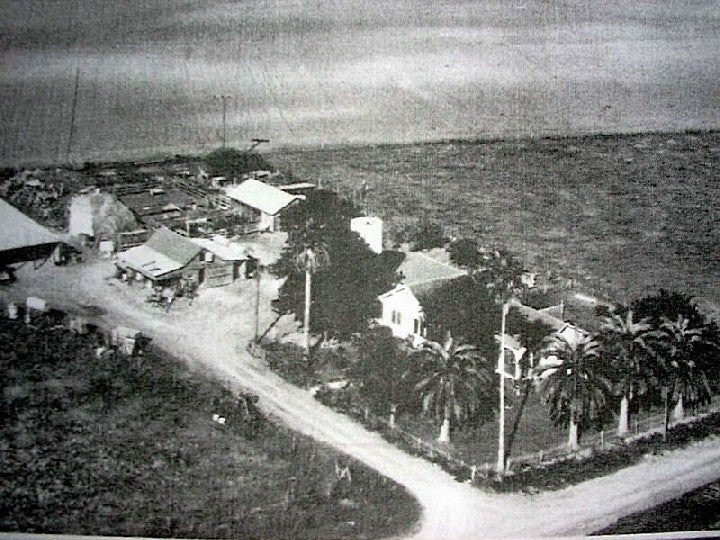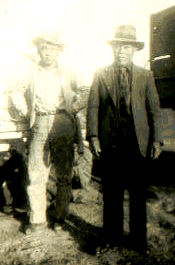The Tanamachi Family

In the early decades of the 20th century, California law became more discriminatory towards Japanese and Japanese Americans, especially regarding land ownership. As a result, many Japanese farming families left California for other states. Among them was the Tanamachi family, which consisted of Kumazo and Asao Tanamachi together with their 13 children. In 1921, the Tanamachis – then with only five children – moved to the Kishi colony in Terry. In 1928, they left for Nome in Jefferson County, then moving again to Yoakum before settling in the Rio Grande Valley in 1933, where they contributed great success to agriculture in the Valley.

Back: Rena, Willie, Saburo, Jiro, Goro, Fumi
Front: Yuri, Kumazo, Walter, Masa, Asao, Mariko
The oldest, Ichiro, was in California. The youngest, Hiroko, was not yet born.
These transitions were not without hardships. For example, during ther initial train ride to Texas in 1921, Asao had labor pains and gave birth to her sixth child, Willie, the day they arrived in the state. In their new home, the Tanamachis had to work laboriously to clear the land for farming, cutting down pine trees and using dynamite to get rid of the remaining stumps. Later, shortly after they moved to Rio Grande Valley, the Valley was hit by a great hurricane that destroyed the Tanamachi’s house.


Children: Hiroko and Mariko
Despite these difficulties, the Tanamachi family thrived and made great contributions to the community. During World War II, four of the Tanamachi siblings served in the Army, where Saburo Tanamachi was killed in action. The legacy of the Tanamachi family continues to be carried by their descendants, namely Sandra Tanamachi Nakata, daughter of Jiro (Jerry Tanamachi) and Kikuko Nakao, who has written extensively about her family history and been actively involved in her community (Sandra was the one who fought to have “Jap Road,” named in honor of the Mayumi brothers in Jefferson County, renamed).
Below are the brief life histories of the 13 Tanamachi siblings (Note: these might not be up to date).
Ichiro "Jack": While the Tanamachis were living in Yoakum, Ichiro was working as a truck driver carrying produce from Rio Grande Valley to Houston. After seeing the farming prospect in the Valley, he convinced the Tanamachis to move there. Ichiro married Midori Nakatsuru and had three children: Robert, Eugene, and Vivian Candy. He later married Juanita Flores and had four children: Jack, Velma, Michael and Ronnie.
Jiro "Jerry": Jiro worked with his father on the farm in the Valley and later started his own successful farm. In 1943, he married Kikuko Nakao, whose family were forced to evacuate from their homes in Los Angeles after Pearl Harbor. They had six children: Diana, Sandra, Jerry James, Deborah, and Laura.
Fumi/Fumiko: Fumiko married Holly Onishi, Sr. and they had four sons: Holly, Jr., Harvey, Richard, and Carl. It is said that Harvey continued their produce business.
Saburo: Saburo was drafted in February 1944 and later joined the 2nd Battalion of the 442nd Regimental Combat Team. As a squad leader, he was killed in action on October 29 of the same year in northeastern France. When his platoon was advancing up a hill, a soldier was hit and Saburo rushed to help him but got hit himself. Saburo was awarded the Silver Star and the Purple Heart, and one of the first two Japanese Americans to be buried in Arlington National Cemetery with full military honors.
Goro: Goro enlisted in the Army Air Corp in 1940 and became an airplane mechanic. He later joined the 442nd Regimental Combat Team and was actually called to identify the body of his brother, Saburo. Goro earned four Bronze Star Medals and was discharged in 1945. He married Yuriko Kawamura, worked for the Air Force, and moved to Dayton, Ohio. They had four children: Patricia, Michael, Beverly, and Becky.
Willie: Willie was the first of the Tanamachi brothers to enlist. He met his wife, Inge, while in Germany. After serving in WWII, he continued to serve in the Korean War and the Vietnam War, surviving both. He had had more than 30 years of military service before retiring in 1971. He also worked for NASA, DEA (Drug Enforcement Administration) and SBA (Small Business Administration). Willie and Inge had four children: Linda, Judy, Tim, and Tom.
Rena: Rena married George Tadano from Phoenix, Arizona, and they had three children: Charles, Peggy, and Ronald.
Walter: Walter was assigned to Port of Bremerhaven, Germany, around 1945 and became Second Lieutenant. After discharge, he went to Texas A&M and graduated in 1952. He married Carol Ann Reeder and had twin girls: Stacey and Rickey. Later, Walter married Bonnie Vaughn and they resided in Harlingen, TX.
Robert: Robert unfortunately passed away shortly after birth and was burried in the Kishi Family Cemetary in Orange County, Texas.
Yuri: Yuri graduated from Mary Hardin Baylor in Design Art and later married Gene Nakayama, a chief Geologist for Sinclair/Arco. They had three children: Lloyd, James, and Phyllis.
Masa: Masa graduated from Jefferson Davis Hospital Nursing School and married Gerald Elliott, Captain in the Air Force, who later received his PhD in Education and taught at the Houston Baptist College. They had three children: Kelly, Kyle, and Kendall.
Mariko "Mary": Mariko married Frank Otsuki, who also farmed in the Valley, and they had one son, Ted.
Hiroko: Hiroko married Dean Edwards who started his own successful business, and they had four children: Denise, Michael, Christopher, and Shawn.
